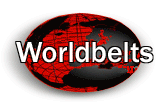

Let's set the scene...
Mists rolling down green hills, the cool, damp air laden with scents of autumn, woodsmoke and fallen leaves, a fox yelping in the distance and Enya's haunting voice singing of ancient lands.
All that just from the word Celt? OK so Keats has nothing to worry about with prose like this so let's move on.
There are three circles at the top of this article.
The one on the left is my simplified version of the Celtic Cross.
When the Celts got Christianity, the cross became modifed with a longer leg and became known as the Celtic Christian Cross. Makes sense. Incorporates what was already in use and sort of overwrites the original pagan meaning. That's the middle symbol.
Drop the longer leg altogether and you get the symbol on the right. I doubt that the ancient Celts or early Christians used it - it's the Transport for London logo!
Have you ever tried drawing one of these knots? It's hard enough with just a single line - as soon as you try to make it any particular thickness it gets incredibly difficult. Looks more like spaghetti! There are even whole books that teach you how to draw this pattern.
And it seems we've laid claim to this type of endless cord design, even though there are different versions of it all over the world. (Admittedly some are a bit more angular than ours). Today then, it belongs to the Scots, Welsh, Cornish and Irish (and their ancestors, the ancient Celts). That includes me then as I'm three eighths Irish!
Celtic knots are ancient pattern that's been included in manuscripts and stone crosses, along with stylised beasties from celtic mythology and today you can wear this ancient artwork around your waist
on a celtic belt buckle.
They make great gifts too, but then I would say that wouldn't I? :-)














